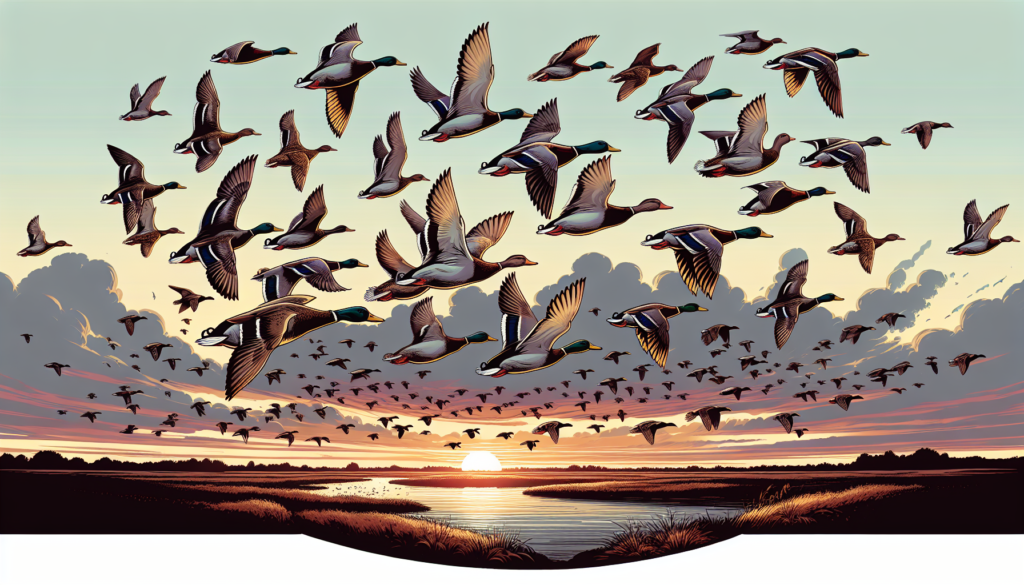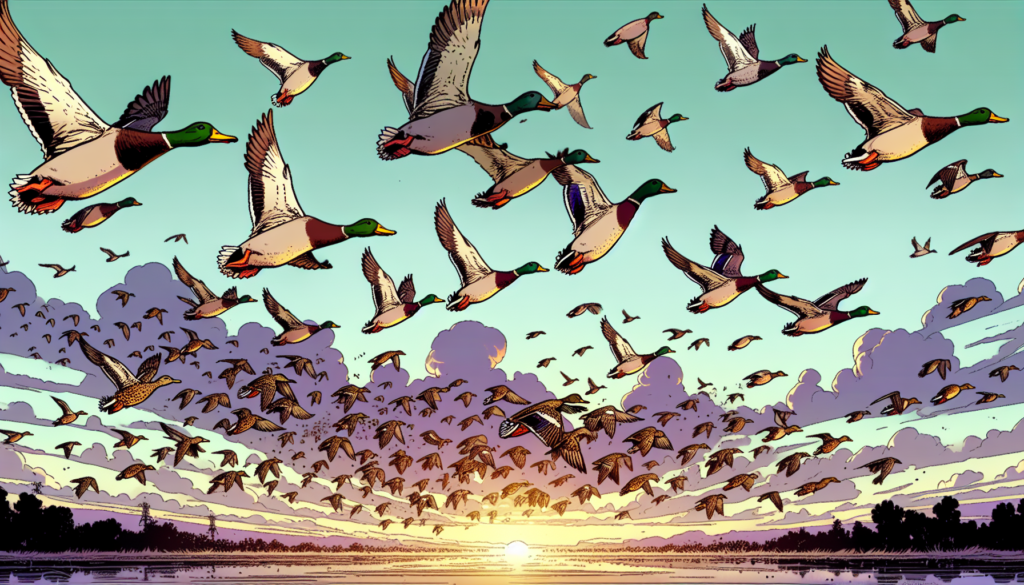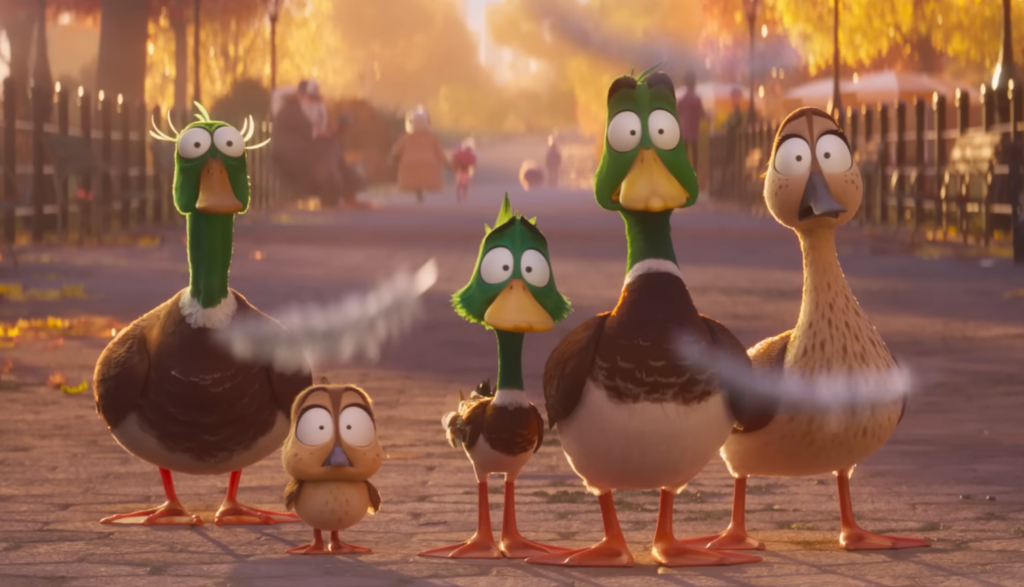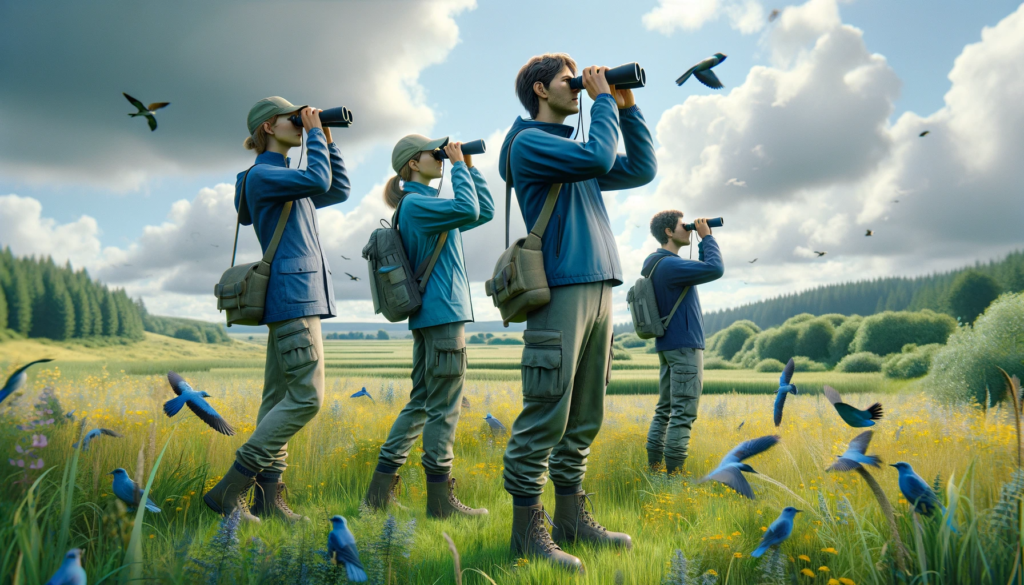Journey with the engaging, newly-released animated film, “Migration”, which beautifully encapsulates the remarkable voyages of bird migration inspired by nature’s finest flyers.
Witness the emotional saga of a Mallard duck family, as they embark on an eventful migration from New England’s scenic expanses all the way to the tropical allure of Jamaica, echoing the real-world phenomenon where a staggering 40% of avian species migrate between breeding and wintering habitats. The tale is far from carefree, however – en route, our feathery protagonists face myriads of perils including voracious predators, violent hurricanes, and the relentless encroachment of habitat destruction and light pollution.
Despite the challenges, this film beautifully depicts the eccentric “partial migration” pattern found in species across North America, including Red-winged Blackbirds, Blue Jays, Red-tailed Hawks, and indeed, the Mallard family at the heart of our enchanting story. Be on the lookout for creative liberties, such as the unusually strong family bonds and fledgling ducks being airborne before their molt cycle. Yet, these alterations do not subtract from the overall charm; instead, the film stands as a celebration of bird migration and a heart-warming inspiration for future avian enthusiasts.

The Inspiration Behind ‘Migration’
‘Migration’ is an innovative new animated film cultivating a deep appreciation for one of nature’s most fascinating occurrences: bird migration. The film encapsulates the awe-inspiring journey of a family of Mallard ducks as they undertake an undoubtedly perilous yet absolutely essential journey. This journey is a real-life phenomenon that occurs amongst almost 40% of bird species worldwide, casting light on the unending cycle of survival and reproduction that bird species undertake as part of their natural life cycles.
The Real-Life Phenomenon of Bird Migration
When you witness a parade of birds flying across the sky in a structured formation, you’re witnessing bird migration. Migration involves bird species making the journey between their breeding region and wintering homes, primarily governed by the need for ample food and suitable nesting environments. Yet, this awe-inspiring exhibition of nature also comes with inherent dangers, from unpredictable weather conditions to hungry predators, challenging their survival skills every step of the journey.
Portrayal of Mallard Ducks’ Migration in the Film
Delving into ‘Migration,’ you are immediately transported onto the journey with a family of Mallard ducks as they migrate from their home in New England and head south to the warm coasts of Jamaica. Apart from painting a picturesque scenario, the film’s purpose is laid bare: to provide the audience with an intimate look into the world of migrating species, capturing the breathtaking beauty and daunting challenges they face.
The Importance of Migration for Survival and Reproduction
Why do birds migrate, you may wonder? The primary reasons lie in survival and reproduction. Migration provides birds access to abundant food resources and ideal habitats for nesting. Much more than a strenuous journey, migration is a natural survival mechanism that has evolved over countless generations, molding these species’ performances, reproductive capacities, and survival dynamics.
Meet the Mallards: Cast of Characters
‘Migration’ offers a unique portrayal of a close-knit Mallard family bound together by their instinctive will to survive and reproduce. Each character carries a distinctive identity, shaped throughout their challenging journey.
Character Development and Roles
The film excels in character development, breathing life into each character as they embark on their journey. Each Mallard has a role to play, from the parents teaching their offspring the migration ropes to the youngest member discovering their wings for the first time.
Anthropomorphism in ‘Migration’
While maintaining the essence of avian behavior, ‘Migration’ employs anthropomorphism, attributing human-like traits to our feathered friends. This technique adds depth to the characters that fosters an emotional connection between the viewer and the Mallard family, making every significant event in their journey more impactful and relatable.
The Dynamic of the Mallard Family
Witnessing the film’s focal Mallard family interact within their community is an interesting exploration of family dynamics in bird species. Although the real-world interactions may not level up to the movie depiction, it brings forth the idea of unity in survival.
Animation and Artistic Representation
‘Migration’ meticulously uses animation to mirror birds’ flight patterns, stunning landscapes they traverse, and their intriguing behavior and ecology.
Artistic Techniques for Depicting Flight
Ever tried to illustrate the beauty of a bird in flight? ‘Migration’ does so effortlessly, using various artistic techniques to capture flight details—from the flutter of feathers to the synchronized wing flaps. It’s nothing less than visual poetry.
Capturing the Essence of Changing Landscapes
As you fly alongside the Mallards, you get an eyeful of their changing milieu. Through artistic representations, the film captures the shifting terrains and changing seasons beautifully, ranging from frozen water bodies and fall-stripped trees to flower-filled fields and sun-drenched shores.
Animating Avian Behavior and Ecology
‘Migration’ is not just an entertaining film but a peek into avian behavior and ecology. Through animation, the film portrays unique behaviors such as feeding, breeding, nesting, and much more, taking the viewers on a virtual birdwatching trip.
Challenges of Migration
Migration may be vital for survival, but it’s definitely not an easy feat.
Predators and Natural Hazards Encountered
While migrating, birds are exposed to various ancient and modern dangers. Predators, inclement weather, and vast bodies of water act as natural hurdles for birds trying to navigate their way.
The Impact of Climate Change on Migration Patterns
More recent challenges include climate change, which confounds birds’ internal clocks and often leads to changes in migration patterns, causing life-threatening mismatches with the availability of their food resources.
Human-induced Threats Along the Journey
Rapidly advancing human-induced threats, like habitat destruction and light pollution, further add to the challenges. These factors not only affect birds’ navigation but also increase their risk of injury and mortality.

The Science of ‘Partial Migration’
‘Migration’ depicts an intriguing occurrence known as “partial migration,” seen in Mallard ducks, among other species.
What is Partial Migration?
In the realm of ornithology, partial migration refers to the phenomenon where only some individuals within a population migrate, while others remain residents in their breeding ground. This fascinating behavior offers species an additional degree of flexibility in their survival tactics.
Species Exhibiting Partial Migration
Partial migration is seen in a range of species like Red-winged Blackbirds, Blue Jays, Red-tailed Hawks, and many more. Each species employs unique decision-making strategies about who will migrate and who will stay.
The Mallards: A Case Study in Partial Migration
Mallard ducks are a salient example of partial migration. Across North America, many Mallards migrate during the winter, especially when their favorite habitats – ponds and lakes – freeze over. However, others choose to stay behind, making Mallards an exciting case study for understanding this unique behavior.
From New England to Jamaica: The Journey
The film portrays the Mallards undertaking a migration from New England to Jamaica, showcasing weather changes and ecological processes that trigger migration and showcasing staging areas and stopover sites.
Mapping the Migration Route
The migration route of these Mallards begins in New England and culminates along the beachfronts of Jamaica. As the viewer, you get a front-row seat to this incredible journey.
Seasonal Changes and Migration Cues
The film nails the representation of triggers that hint at the birds when it’s time to set off. These cues are generally changes in the environment, including temperature shifts, daylight hours, and food availability.
The Staging Areas and Stopover Sites
‘Migration’ highlights vital rest spots along the way, known as staging areas and stopover sites. These areas are essential refueling stations for the birds.
Understanding Mallard Duck Behavior
‘Migration’ takes you inside the lives of Mallard ducks, casting light on their feeding habits, social constructs, and breeding rituals.
Feeding Habits and Foraging
Mallards are dabbling ducks. They mostly float on the surface of water bodies, dabbling their bills and heads underneath to find food. Watching this in animation is utterly delightful.
Social Structuring Among Mallards During Travel
While traveling, Mallards display an intricate social structure, with larger, more dominant males often leading the formations. However, it’s during the mating season that their social dynamics truly come alive.
Mating Rituals and Breeding Before Migration
One of the plot’s joys is witnessing the Mallards conduct their charming mating rituals before migration. This is vital because breeding and raising the young often happen before the Mallards set off on their journey.
Film Production: Melding Fact and Fiction
Balancing a compelling story with scientific accuracy can be a challenge, but ‘Migration’ manages this balance beautifully.
Artistic Liberties and Storytelling
To keep the narrative engaging, the creators used artistic liberties. For instance, the film showcases ducklings capable of flight before molting, but it’s done for the sake of storytelling.
Consulting with Ornithologists for Accuracy
Though liberties were taken, ornithologists were consulted to ensure crucial aspects were represented accurately. This helps the film remain rooted in the realities of avian behavior, migration, and survival.
Balancing Educational Content with Entertainment
‘Migration’ masterfully balances education with entertainment, creating an immersive cinematic experience while also igniting viewers’ curiosity about bird migration.
Conservation Message in ‘Migration’
Amid the engrossing storytelling and attractive animation, ‘Migration’ subtly inculcates the idea of conserving wildlife and their habitats.
Highlighting the Importance of Habitat Preservation
One crucial conservation message within the film is the importance of habitat preservation. Safe and healthy migration paths, clean water bodies, and natural landscapes are significant for the survival of bird species.

The Effects of Light Pollution on Migratory Birds
‘Migration’ sheds light on how artificial lighting affects birds, particularly during their night-flying migration. Light pollution disorients birds, increasing their risk of collision and mortality, and unsettling their circadian rhythms.
Promoting Conservation through Animation
By embedding subtle conservation messages in a wildly engrossing narrative, ‘Migration’ employs animation as a powerful tool to encourage viewers to indulge in proactive conservation.
The Future of Wildlife Animation
‘Migration’ sets the bar high for future animated wildlife documentaries, promising a bright future for this genre.
‘Migration’ and its Influence on Future Projects
‘Migration’ stands as a benchmark for future films blending art, science, and storytelling into a seamless narrative, galvanizing audiences to appreciate and conserve wildlife like never before.
Trends in Animated Wildlife Documentaries
With such an exemplary leap in the realm of wildlife animation, one can expect more vivid storytelling, accurate representation of wildlife behavior, and pressing conservation issues in future projects.
The Role of Animation in Wildlife Awareness
‘Migration’ underpins the role of animation in raising wildlife awareness. The confluence of visual storytelling and scientific accuracy paves the way for a new era of wildlife documentaries, engaging a broad spectrum of viewers, from curious youngsters to seasoned birdwatchers. Animation is no longer simply a form of entertainment – it is now a powerful tool for nurturing conservation culture.



